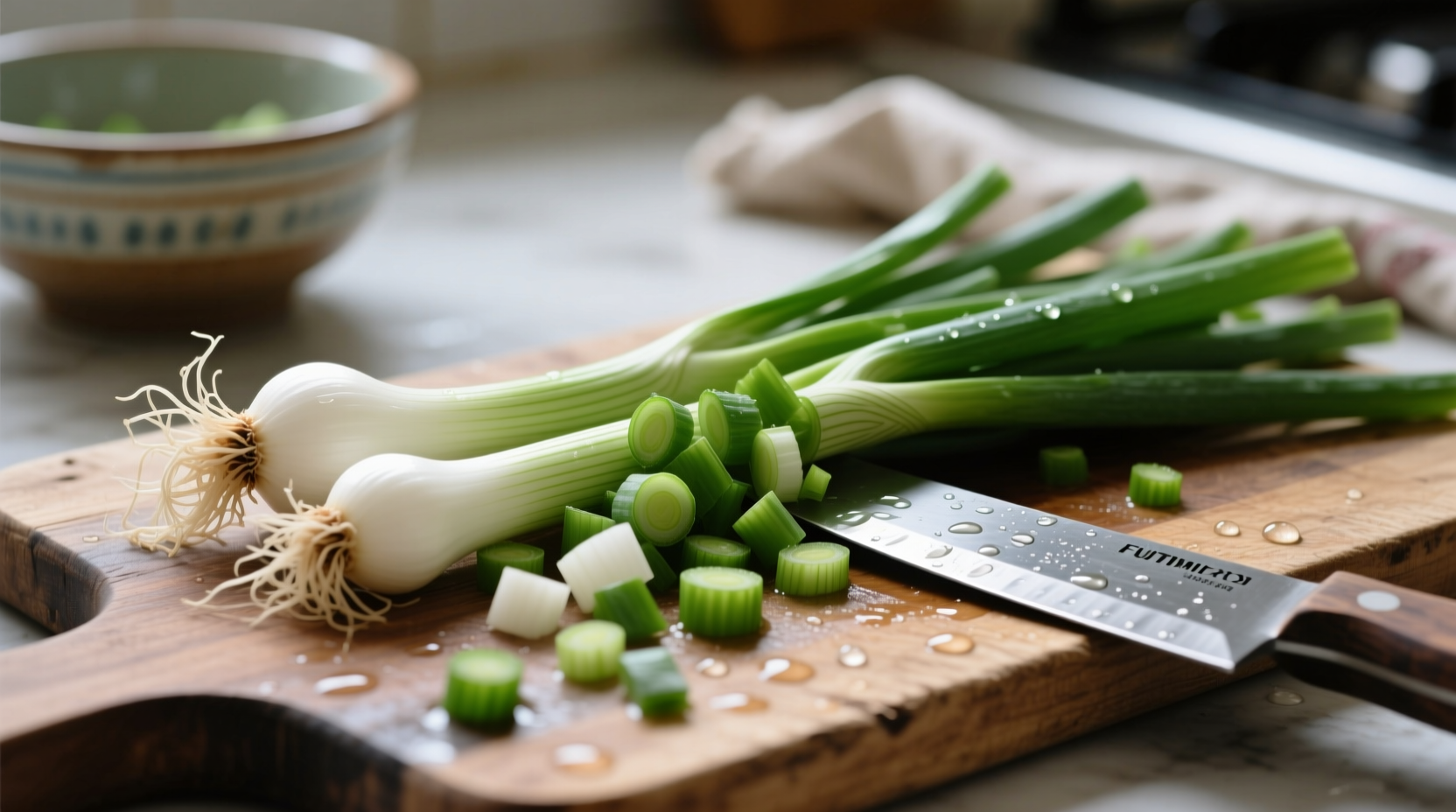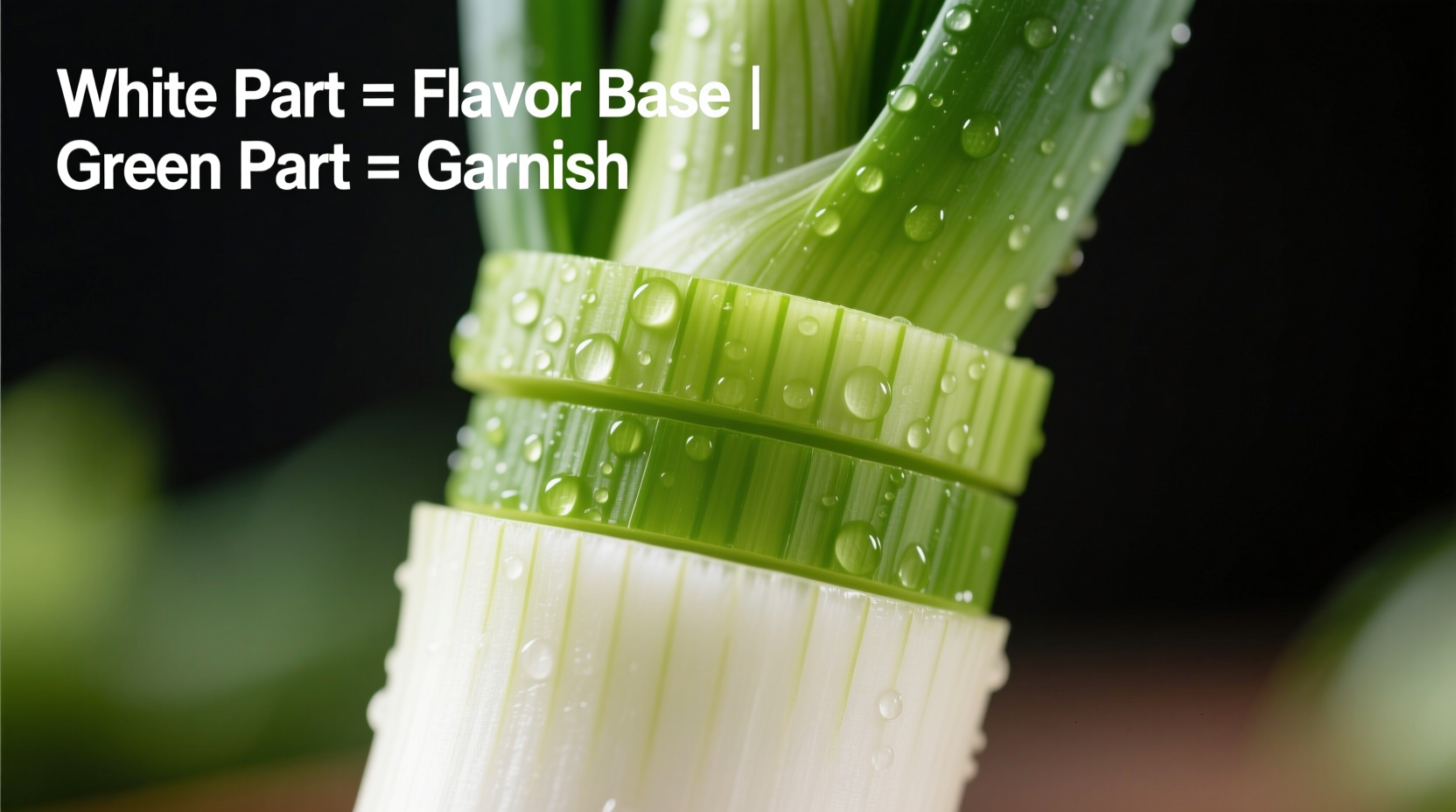Every part of the green onion (scallion) is edible and useful in cooking—the white bulb provides sharp, pungent flavor ideal for sautéing, while the green stalks offer milder, fresh notes perfect for garnishes. Properly using both parts maximizes flavor, reduces waste, and elevates dishes from stir-fries to soups.
Confused about which parts of green onions to use? You're not alone. Many home cooks discard valuable components without realizing how each section contributes unique flavors and textures to dishes. As a chef who's worked with scallions daily for over 15 years across professional kitchens and home cooking demonstrations, I'll show you exactly how to leverage every inch of this versatile allium.
Understanding Green Onion Anatomy and Flavor Profiles
Green onions, also called scallions, consist of three distinct sections with different culinary applications. Unlike mature onions where only the bulb is typically used, scallions offer edible components from root to tip. The USDA FoodData Central confirms that both white and green portions contain valuable nutrients including vitamin K, vitamin C, and antioxidants (USDA FoodData Central).
| Green Onion Part | Flavor Profile | Best Culinary Uses | Preparation Tip |
|---|---|---|---|
| White bulb & root end | Strong, pungent, onion-forward | Sautéing, stir-fries, soups, stocks | Finely chop; add early in cooking |
| Middle transition zone | Moderate sharpness, balanced flavor | Omelets, sauces, marinades | Slice thinly; medium cooking time |
| Dark green stalks | Mild, grassy, fresh | Garnishes, salads, finishing touches | Chiffonade; add at end of cooking |
When to Use the White Parts: Building Flavor Foundations
The white portion of green onions contains higher concentrations of sulfur compounds, delivering that characteristic sharp onion flavor. Professional chefs consistently use this part as the flavor base for dishes requiring aromatic depth. When making stir-fries or soups, always start with the white sections—they can withstand higher heat and longer cooking times without burning.
For optimal results when using white parts:
- Trim just below the white-green transition point
- Soak briefly in cold water to remove soil trapped between layers
- Use a fine dice (1/8-inch) for even distribution in sauces
- Add to hot oil 1-2 minutes before other vegetables in stir-fries

Maximizing the Green Stalks: Fresh Finishing Touches
The green portions contain more chlorophyll and less sulfur, creating a milder, fresher flavor profile perfect for finishing dishes. Cornell University's Food Science Department notes that the green sections retain more volatile aromatic compounds when added at the end of cooking (Cornell CALS).
Professional applications for green stalks:
- Finely slice across the grain for garnishes on finished dishes
- Use whole stalks as skewers for small meat or vegetable pieces
- Add to salad dressings for subtle onion notes without overpowering
- Blend into herb oils for vibrant color and mild flavor
Context-Specific Usage Guide: Matching Parts to Dishes
Understanding which green onion parts work best for specific dishes prevents common flavor imbalances. The transition zone (where white meets green) offers the most versatility—its moderate flavor works in both cooked and raw applications.
Key context boundaries to remember:
- Stir-fries: White parts early, green parts at the very end
- Soups and stews: White parts with aromatics, green parts as garnish
- Omelets and frittatas: White parts in filling, green parts on top
- Sauces and dressings: Middle section for balanced flavor
- Raw applications: Green parts only for delicate salads
Avoiding Common Green Onion Mistakes
Even experienced cooks make these green onion errors that compromise flavor and texture:
- Mistake: Using only green parts in cooked dishes
Solution: Always include white portions for foundational flavor - Mistake: Adding green stalks too early in cooking
Solution: Wait until last 30 seconds for maximum freshness - Mistake: Discarding root ends completely
Solution: Trim only dirty tips; use clean root portions in stocks - Mistake: Chopping all parts uniformly
Solution: Adjust chop size based on cooking time requirements
Proper Storage Techniques for Maximum Freshness
Extend your green onions' shelf life by storing them correctly. The University of California Cooperative Extension recommends treating green onions like fresh herbs for optimal longevity (UC Cooperative Extension).
Storage methods by part:
- Whole green onions: Trim roots, store upright in jar with 1" water, cover with plastic bag in refrigerator
- Separated parts: White portions in airtight container with damp paper towel; green stalks in herb keeper
- Pre-chopped: Freeze white portions in oil cubes for instant cooking base
- Long-term: Dehydrate green portions for soup seasoning (white parts don't dehydrate well)











 浙公网安备
33010002000092号
浙公网安备
33010002000092号 浙B2-20120091-4
浙B2-20120091-4